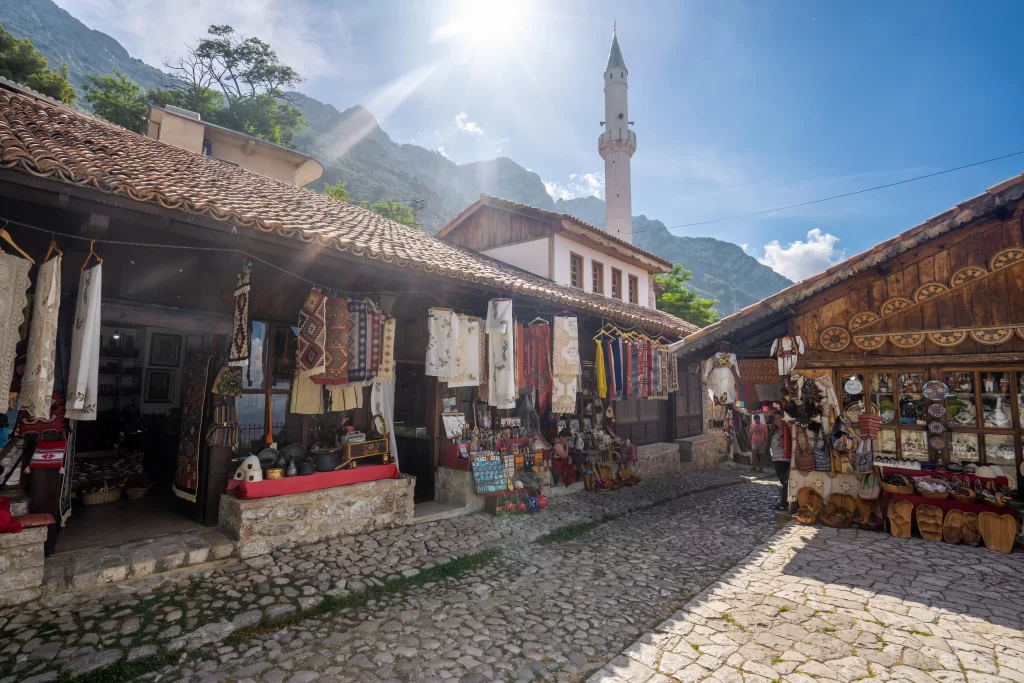Four centuries back , the current city of Islamabad was the home to a few villages, scattered throughout the city. In these villages resided the gakhars, malhairs, and rajputs. Nestled at the foot of margalla hills lies one such village; Saidpur where the stones and walls speak of ancient civilizations. The village was named after Sultan Saidpur, the chief of the Potohar region in Mughal emperor Babur’s era. The site gives a picturesque view of the local village life representing the multicultural ethnicity of the region. It is a must visit place if you wanna see into the past of the region where different cultures lived together for so many years from buddhists to british Raj.
In this blog post we’ll sneak a peek into the rich multi-cultural history of Saidpur village from its discovery to its current status.So, get your horses, we are going on an historical adventure, (trust me, you’ll need them!)
History:
The village is more than 500 years old which saw several civilizations through the time from Gandhara to British Raj. In 1530 AD , Mirza Fateh Ali discovered the place now known as Saidpur village. Hence it was named after him as Fatehpur Baoli in 1530. However, in the later years, Mughal emperor Akbar transferred the land to Said Khan Gakhar for their clan’s successful effort in defeating Sher Shah Suri. Said Khan Gakhar renamed the village as Saidpur and gifted it to his daughter when she married Mughal emperor Jhangir. In Jahngir’s autobiography Tuzk-e-Jahangiri , he refers to the village as a place “beyond Rawalpindi”.
Back then, the village was a garden resort with a spring that provided water for drinking and irrigation purposes. In 1580 AD, a hindu commander of the imperial mughal army Raja Maan Sigh visited said pur village and was so mesmerized by its tranquility that he decided to build a hindu worship site in the village.
Hindu worship site:
To leave his mark at the place, Raja Man Singh built a Dharamshala ( a place to rest for travelers) a hindu temple ; Rama temple and four ponds named after four gods of hindus:
- Rama kund
- Lakshman kund
- Sita kund
- Hanuman kund
Kund in the local subcontinental script means lake or a pond. After the Rama temple was built, there were idols of hindu deities placed for the hindu worshippers, where they used to celebrate their religious ceremonies.
Sikh Gurdwara: Interfaith Harmony.
In the 20th century however, sikhs built the gurdwara near the temple, which served as a school to spread Guru Nanak’s teachings to the sikhs. Waheguru, and the hindu deities Lakshmi and KAli were worshiped and praised next to each other spreading the interfaith harmony. There are a few mosques as well near the gurdwara and the temple.
After the partition of Subcontinent:
After the partition of the subcontinent, the Hindus of this region moved to India or Hindustan and took their deities along with them. From 1960 to 2006 the gurdwara was converted into a girls school. In 2006 however, CDA took the village under its possession and turned it into a tourist site.However, the local Hindus have now shown a desire to reopen the temple, Since the nearest temple is in the city of rawalpindi.
Current situation:
Initially the CDA maintained the site by giving the uplift to the mud houses and preservation of the temple and the gurdwara. The village has been taken over by the high end restaurants such as des pardes, and Dera Pakhtoon. There is a museum full of old pictures of Islamabad while it was in the making of its present glory. There are different stalls that sell local artifacts and jewelry such as pots and other antique things.
However at the moment Saidpur village is struggling against its decay. It is surrounded by heaps of garbage piles. The ponds inside the vicinity of the temple are reeking of sewerage. The temple itself is in shambles due to the lack of preservation and restoration. The local hindu community is displeased with the current situation of the temple. They have expressed their concerns about the temple being disrespected by the tourists as they walk inside the religious places without removing their shoes.
Conclusion:
From 1530 AD to current times Saidpur village holds the history of more than 500 years. From its humble beginnings as Fatehpur Baoli, to its transformation into Saidpur during Mughal rule, this village has seen the rise and fall of empires. Its heritage is quite rich with multi multi-cultural background and interfaith harmony for centuries. A place where Maan Singh Rajput left his imprint in the form of Rama temple and the ponds, is now a tragic picture of decay and reeks of sewage. It still is, however, an attractive tourist site. However it needs to be renovated and revived to its glory. The sacredness of the temple has to be restored for the local tourists. In the heart of Islamabad, Saidpur Village’s story continues, reminding us that history should not just be preserved but revered.
